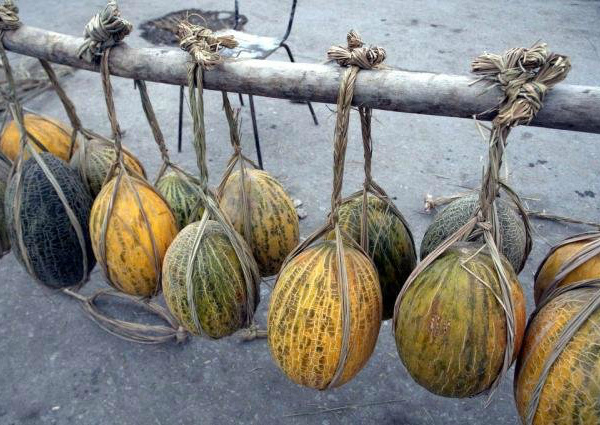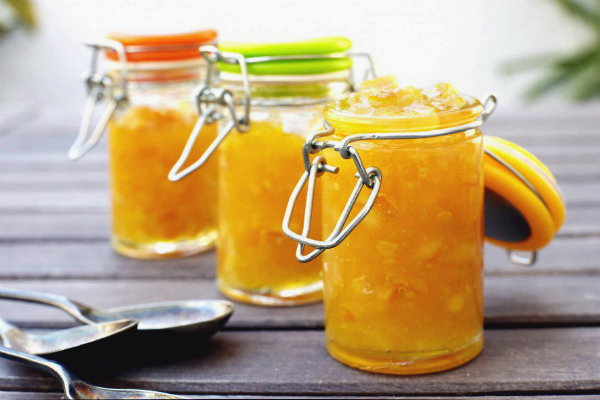How to store melon at home
Content
Preparing melon for storage
Different varieties of melon can be expected to have different shelf life. There are varieties whose fruits cannot be stored for more than 15 days. Small ones are those that can be stored for only one month, medium ones - up to two months, lying - up to three months, and those that are subject to even longer storage are considered very mature.
"Bykovchanka", "Zimovka" - these varieties can be left until the New Year, they are able to lie all winter without losing their taste, it is a pity that they do not ripen in the middle lane, these late varieties are grown only in the fields of the southern republics.
At our dachas, "Yellow Canary", "Gulaba" and "Torpedo" grow well, so they can be put for long-term storage. If everything is done correctly, then a delicious melon can not only decorate the table in honor of the New Year, but please us all winter. Slightly immature fruits with intact skin are selected for storage. The nose of the melon should be firm, not soft (which indicates ripeness), but the aroma is already clearly distinguishable. The fruit of this degree of ripeness, without any damage, is carefully torn off the stem by hand, leaving 3 cm of the tail. It is advised to do this on a warm cloudless day, then the melon can still be warmed up in the sun, leaving it on the garden bed and turning it with different sides for even heating.
Only absolutely whole healthy fruits can be saved, especially for a long time. Therefore, before laying in special rooms or for storage at home, you need to carefully examine all the fruits again - the slightest darkening of the skin indicates a rot beginning in the middle, and any deep crack can lead to infection from the outside. It is best to cut up all suspicious fruits and eat them as soon as possible, and not put them off for the winter.
We store melon in winter
In the south, melon growers preserve the harvest of melons in specially built structures with very thick (up to 1 m) clay walls. Melons are stored there all winter until next year at temperatures no higher than +13 in summer and +6 in winter.
It will be right for us to keep melons separate from all other fruits, since they absorb all extraneous odors - they acquire the smell of damp earth from potatoes, and apples generally contribute to the rapid ripening of melon pulp.
The best solution would be to store melons in a separate room in the cellar, where the temperature in winter will not drop below +6 or +8 degrees, and the humidity will not exceed 80%. High humidity will provoke rotting, and too low will force the fruits to dry out. No matter how many fruits you put in the same room, they should not touch each other. You can spread them out on a soft cloth, sand or sawdust mat on the shelves. A good place would be a box with dry sand, melons are placed in it vertically, with the stalk down, and half covered with sand or sawdust. If the tail has already disappeared, it is advisable to fill its place with paraffin in order to protect against infections.
To store fresh melon correctly is to hang each fruit separately using a net or a canvas bag so that it does not touch anything other than this bag.In this case, the room must be ventilated, and the fruits must be examined at least once a month, and those that are beginning to deteriorate must be removed.
Storage in the apartment
How long a melon will lie at home depends primarily on the degree of its ripeness. An unripe fruit can lie at home for a week on a soft cloth bedding in a shaded area. If the nose of the fruit is soft, the aroma is strong, it means that the pulp is already fully ripe, in which case the shelf life is reduced to two days. In a cool place in the apartment, for example, at the balcony door, an unripe melon of a suitable variety can lie for a month - not until the New Year, of course, but also good.
A whole, undamaged melon can be put in the refrigerator for a couple of weeks, on the lowest shelf. Before that, it is advisable to wash it, dry it, then wrap it in cling film (leaving holes or slots for air) or in a cloth made of natural fabric.
We are accustomed to the fact that everything at home helps to preserve the refrigerator, we often even exaggerate its importance. This is not always correct. Melon, for example, at low temperatures (close to zero) can become harmful - ethylene is produced in its ripe pulp, and a large amount of it can cause poisoning of the body. For the same reason, it is not advisable to keep the cut fruit in the refrigerator, and in general it would be right to eat it right away.
Many people put the cut melon in special containers, close it tightly and then confidently eat it the next day. Better not to. If placed in the refrigerator, low temperatures will stimulate the production of ethylene. If left at room temperature, the sweet flesh can rot in a short time. So it turns out that it is better to throw away the half-eaten fetus than to expose yourself and your loved ones to the danger of poisoning.
The only way in which your favorite refrigerator will help preserve tasty pulp until the New Year or even for the whole winter is to freeze it. You just need to do it right.
For freezing, peel and cut the pulp into small strips up to 4 cm long, up to 2 cm wide and up to 1 cm thick.Then lay out in one layer on a baking sheet or dish so that the strips do not touch, place in the freezer until completely frozen. After that, they can be folded into a plastic bag and stored in the same freezer not only all winter, but even a whole year. Frozen balls made from ripe pulp look spectacular. This method allows you to save most of the useful items.
Dried melon can be kept at home for just as long. Some make delicate tasty jam from it.
There are many ways to keep your favorite fruit for a long time and enjoy it at any time during the year. But it will never be so tasty as freshly brought from the garden, where it is fully ripe under the rays of the gentle sun.
Video "Drying melon" Kolkhoznitsa "
This video demonstrates the process of making Kolkhoznitsa dried sweet melon in an electric dryer for fruits and vegetables.





